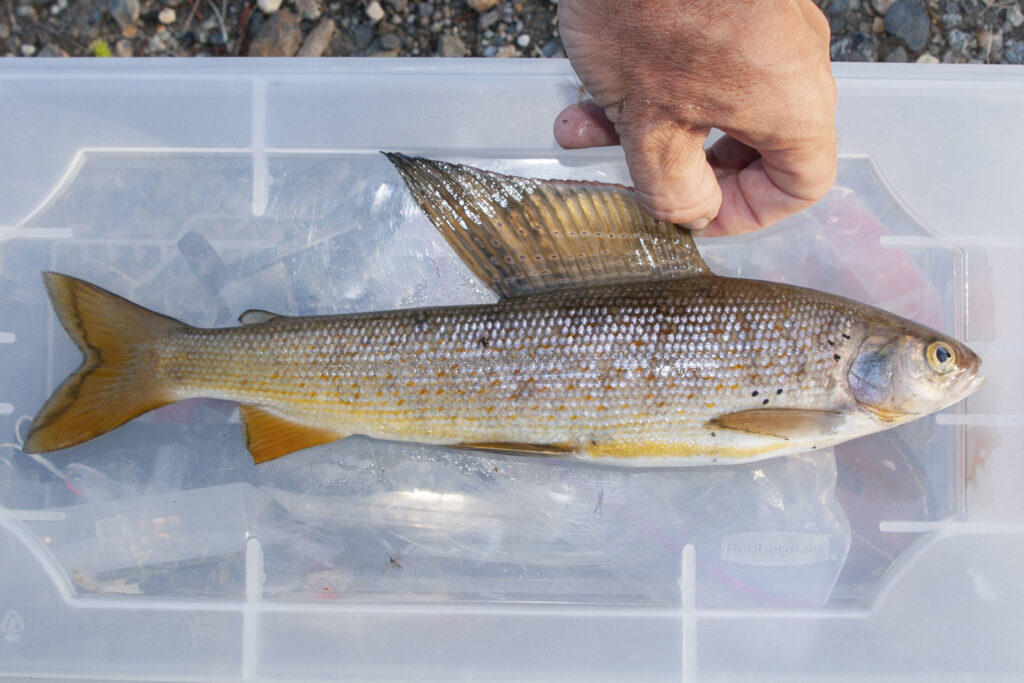
This article was originally published by Reason.
For nearly two decades, ranchers in Montana’s Big Hole Valley have worked with local conservation groups to protect habitat for the Arctic grayling, a rare fish with colorful markings and a saillike dorsal fin. But if some environmentalists get their way, these voluntary efforts could be in jeopardy.
Last week, the Center for Biological Diversity and Western Watersheds Project sued the U.S. Fish and Wildlife Service seeking federal protections for the grayling, which could result in costly land-use restrictions on ranchers in the valley. In 2020, the federal agency determined that the fish did not warrant listing under the Endangered Species Act, citing the success of voluntary conservation measures. But the environmental groups—neither of which is involved in local grayling recovery projects—contend that “regulatory mechanisms,” not voluntary efforts, are needed to protect the grayling.
Unfortunately, the lawsuit not only undermines decades of good-faith compromises, it is also likely to hurt, rather than help, the fish species.
Arctic grayling once inhabited much of the upper Missouri River basin, but the remaining river-dwelling populations are now almost exclusively found in Montana’s Big Hole Valley. In addition to supporting grayling and other prized fish species, the valley is home to several small agricultural communities and family-run cattle ranches. Ninety percent of the land along the river is owned by these private landowners, making them a crucial partner in efforts to recover the grayling.
In the 1990s, low river flows due to drought and irrigation diversions threatened the Big Hole’s grayling population. In response, some environmentalists began filing petitions and lawsuits to list the grayling under the Endangered Species Act. But this did more harm than good. Because an endangered species listing usually comes with burdensome land-use restrictions, landowners are often reluctant to aid in recovery efforts for fear of being held responsible for harming a listed species.
Montana rancher Dave Cameron learned this lesson the hard way. Several decades ago, he sought to restore the species to a stream on his property but was discouraged when he learned about the potential federal listing. “People knowledgeable about the heavy-handed approach of the feds counseled me to forget the experiment,” he told a congressional committee in 1995. Other ranchers encountered the same problem, Cameron said. “Why does the hosting of a rare and troubled creature have to be a threat to their livelihood rather than a source of pride and pleasure?”
Recognizing this challenge, local conservation groups worked with ranchers in the Big Hole Valley to develop a creative solution in 2006. The plan, known as a Candidate Conservation Agreement With Assurances, enabled landowners to restore grayling habitat in exchange for protection against future regulatory restrictions. Ranchers who enhance streamflows, restore habitat, fence off riparian areas from livestock grazing, or take other conservation actions won’t be prosecuted if they inadvertently harm grayling. In addition, ranchers agree to cut back on irrigation when river levels run low, helping to boost streamflows when grayling need it most.
The agreement worked well. The grayling population in the Big Hole River has increased 172 percent since the early 2000s, and the number of breeding adult fish has more than doubled. Today, 32 landowners are enrolled in the agreement, with property-specific plans to benefit grayling across more than 160,000 acres of land along the Big Hole River.
Given this success, local conservationists are wary of the environmental lawsuit and a potential federal listing. A former director of Trout Unlimited in Montana recently told the Missoula Current that although the grayling is eligible for listing, it would only create “a lot of heartburn and a bunch of pissed off people.” A member of the local watershed group agreed, saying, “If the federal government takes over, you will lose all the voluntary conservation that we have.”
Similar concerns have plagued species recovery on private lands across the country. The threat of endangered species regulation has encouraged landowners to destroy potential habitat for red-cockaded woodpeckers, pygmy owls, golden-cheeked warblers, and many other species—all to avoid restrictions that could arise if the species inhabited the land. “The incentives are wrong here,” a former Fish and Wildlife Service director once lamented. “If I have a rare metal on my property, its value goes up. But if a rare bird occupies the land, its value disappears.” With incentives like this, it’s no wonder only 2 percent of listed species have recovered in the nearly 50 years since the Endangered Species Act was passed.
Fortunately, changes may be coming. This week, the Fish and Wildlife Service announced plans to encourage more local conservation efforts similar to the one that has helped the grayling. The proposal seeks to simplify the approval process for Candidate Conservation Agreements With Assurances and other voluntary agreements, which can alleviate the Endangered Species Act’s perverse incentives, but often take more than a decade to complete. (Perhaps unsurprisingly, the environmentalists behind last week’s grayling lawsuit condemned the new proposal.)
As we approach the 50th anniversary of the Endangered Species Act later this year, it’s worth asking how the act can be reformed to better accomplish its primary goal: to recover species. After all, endangered species have it bad enough. We should make sure the laws designed to protect them don’t make things worse.



